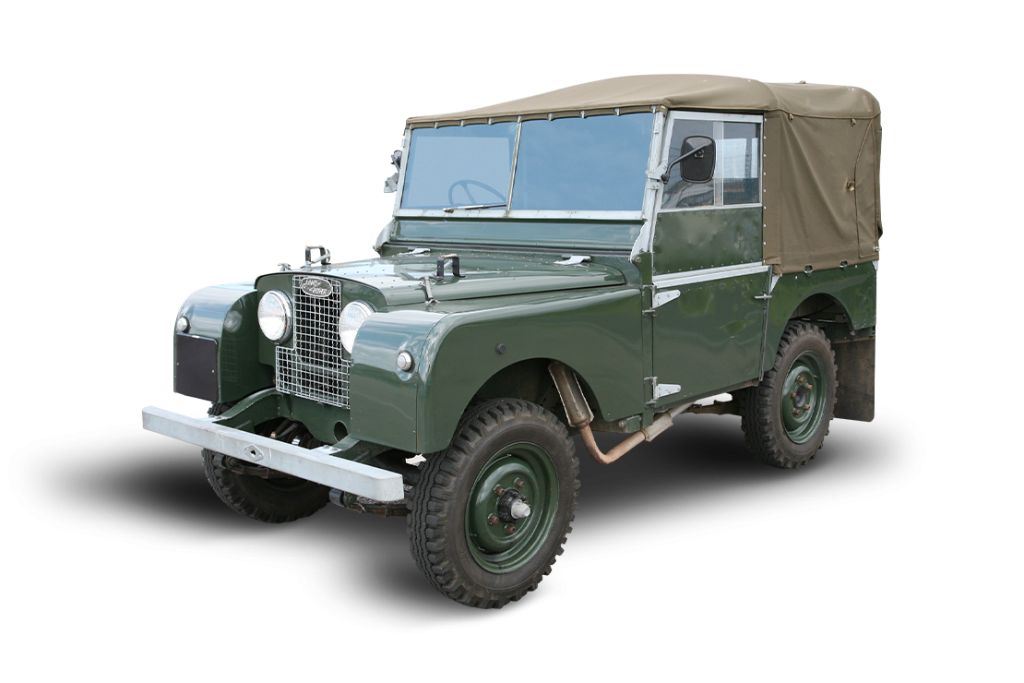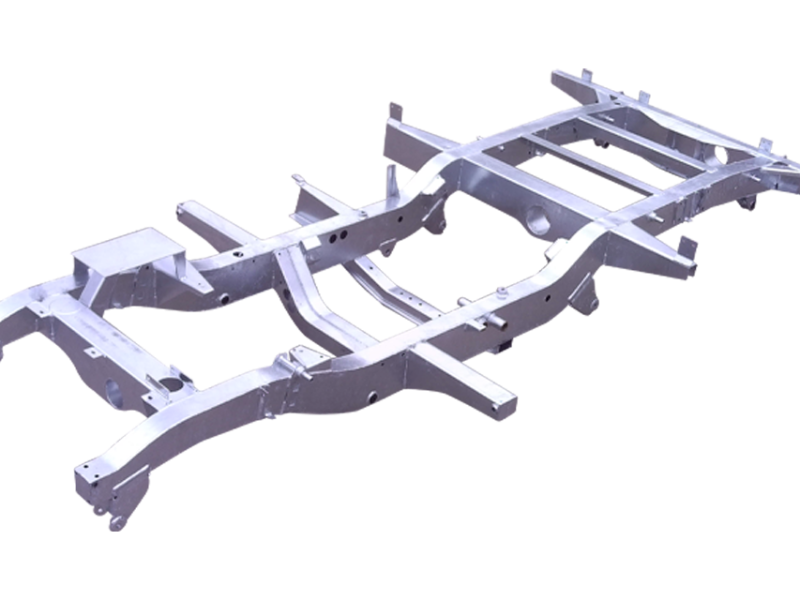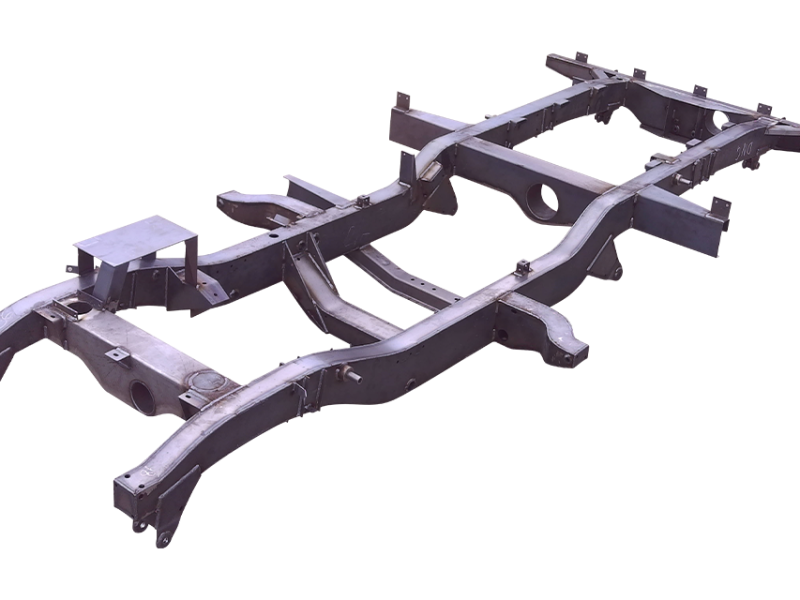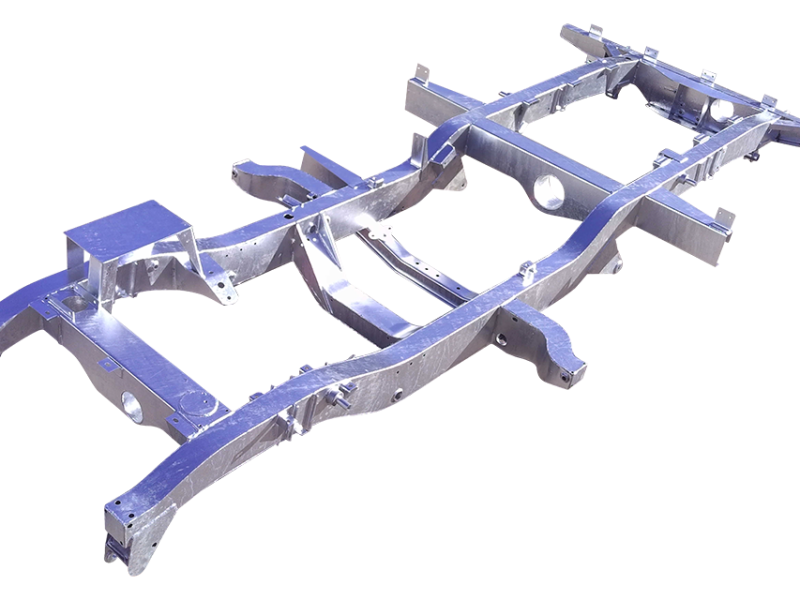Land Rover entered production in 1948 with what has later been termed the Series I. This was launched at the Amsterdam Motor Show. It was designed for farm and light industrial use, with a steel box-section chassis and an aluminium body.
Originally the Land Rover was a single model offering, which from 1948 until 1951 used an 80-inch (2.03 m) wheelbase and a 1.6-litre petrol engine producing around 50 bhp (37 kW; 51 PS). The four-speed gearbox from the Rover P3 was used, with a new two-speed transfer box. This incorporated an unusual four-wheel-drive system, with a freewheel unit (as used on several Rover cars of the time). This disengaged the front axle from the manual transmission on the overrun, allowing a form of non- permanent 4WD. A ring-pull mechanism in the driver’s footwell allowed the freewheel to be locked to provide more traditional 4WD. This was a basic vehicle: tops for the doors and a roof (canvas or metal) were optional extras. In 1950, the lights moved from a position behind the grille to protruding through the grille.

Series 1 chassis
-
Series 1 80 inch Richards chassis
€5.075,21 – €5.325,21Opties selecteren Dit product heeft meerdere variaties. Deze optie kan gekozen worden op de productpagina -
Series 1 86 inch Richards chassis
€4.836,84 – €5.086,84Opties selecteren Dit product heeft meerdere variaties. Deze optie kan gekozen worden op de productpagina -
Series 1 88 inch Richards chassis
€4.836,84 – €5.086,84Opties selecteren Dit product heeft meerdere variaties. Deze optie kan gekozen worden op de productpagina -
Series 1 107 inch Richards chassis
€6.829,71 – €7.079,71Opties selecteren Dit product heeft meerdere variaties. Deze optie kan gekozen worden op de productpagina -
Series 1 109 inch Richards chassis
€6.829,71 – €7.079,71Opties selecteren Dit product heeft meerdere variaties. Deze optie kan gekozen worden op de productpagina
Land Rover Series 1, 2 and 3
The Land Rover Series 1, 2 and 3, commonly referred to as Series, are compact British offroad vehicles, produced by the Rover Company since 1948. Later this became British Leyland. The Land Rover distinguished itself because it was inspired by the World War 2 Jeep.
From launch, it was the first mass-produced civilian four-wheel drive car with doors on it, and an available hard roof. Contrary to conventional car and truck chassis, it used a sturdier fully box-welded frame. Furthermore, due to post-war steel shortage, and aluminium surplus, Land Rovers received non-rusting aluminium alloy bodies, favouring their longevity. In 1992, Land Rover claimed that 70% of all the vehicles they had built were still in use.
Most series models feature leaf-spring suspension with selectable two or four-wheel drive (4WD), however series I’s produced between 1948 and mid-1951 had constant 4WD via a freewheel mechanism, and the Stage 1 V8 version of the series III featured permanent 4WD. All three models could be started with a front hand crank and had the option of front & rear power takeoffs for accessories.
After adding a long wheelbase model in 1954, Land Rover also offered the world’s first four / five door, 4WD off-road station wagon in 1956. Series Land Rovers and Defenders continually excelled in space utilization, offering (optional) three abreast seating in the seating rows with doors, and troop seating in the rear, resulting in up to seven seats in the SWB, and up to ten seats in the LWB models, exceeding the capacity of most minivans, when comparing vehicles of the same length.






